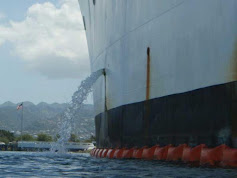Hey all,
It's Caroline! Back again to talk about my team's week at the Boston Children's Museum. This week my team started Fishing 101 at the Boston Children's Museum, each day we see hundreds of people attend camps, and explore the Fort Point Channel, many of which stop in at our tent, located right outside the entrance to the museum. Here visitors have a chance to go fishing or use crab traps, many even for the first time! We have had so many conversations this week about harbor wildlife, and more specifically people have been asking to see and hold the crabs in our touch tanks. While people hold these crabs, we often begin having conversations about the European Green Crab.
The European Green Crab has a long history in Boston Harbor. Well over 100 years ago, Europeans traveling to the United States brought them over in the ballast water of their ships (ballast water is the water that is used for stability in larger vessels, it usually pours out the sides when the vessel is uneven, image added below because I also had to look it up). Their arrival in New England had devastating consequences. These crabs prey on smaller shellfish populations, they also have tremendously impacted the total soft-shell clam populations, making these crabs dangerous for marine life ecosystems in Massachusetts.
Some possible solutions people have proposed have been pretty creative. This website (listed below) offers ideas on how to prepare and eat the Green Crabs found in the harbor, "After discovering the crab had decimated New England soft-shell clam populations, conservationists began focusing on removal to mitigate their invasive impact. Other folks came up with a different idea: eating the problem." However, Massachusetts fishing and wildlife says, "A permit is not needed to take, keep, or land green crabs as they are an inedible invasive species". So maybe don't eat the green crabs.
Here is some more helpful information about the Green Crabs:
How to identify Green Crabs: https://www.mass.gov/files/documents/2019/07/26/crabs.pdf
http://www.adfg.alaska.gov/index.cfm%3Fadfg%3Dinvasiveprofiles.europeangreencrab_characteristics
How to Cook Crabs: https://www.greencrab.org/
An interesting find of the week:
Caroline :)
Sources:
Hanrahan, Kate. “Blog: Not from around Here - Green Crabs.” Mass.gov, https://www.mass.gov/service-details/blog-not-from-around-here-green-crabs.
Floreak, Michael. “Green Crabs Are Invasive. Lucky for Us, They Are Also Delicious - The Boston Globe.” BostonGlobe.com, The Boston Globe, 17 Aug. 2021,





No comments:
Post a Comment